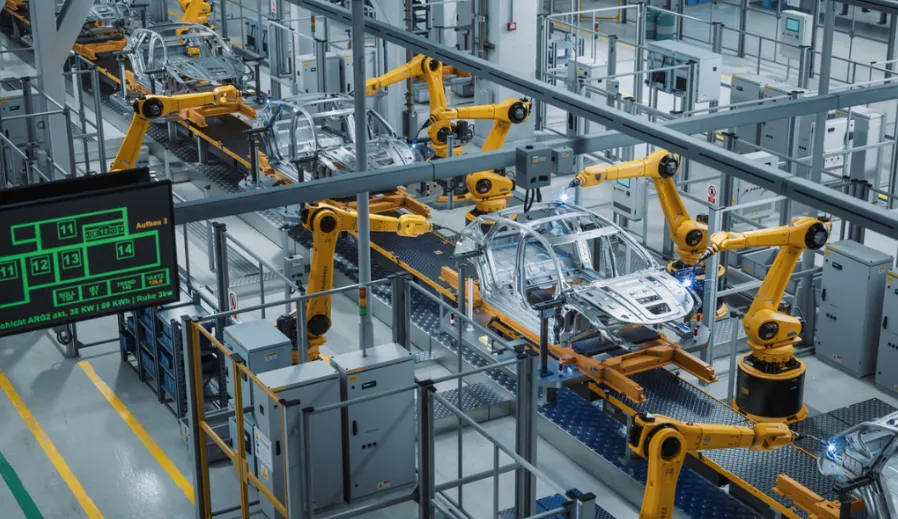In today’s advanced manufacturing facilities, industrial automation systems are achieving unprecedented levels of precision and efficiency. Modern robotic arms equipped with force-torque sensors can assemble delicate electronics with micron-level accuracy, while AI-powered vision systems inspect hundreds of products per minute with superhuman consistency. These systems don’t just perform tasks – they continuously optimize processes through real-time data analysis, adjusting parameters like speed, pressure, and temperature to maintain perfect quality control. The integration of industrial automation technologies has transformed production lines into intelligent networks where machines communicate seamlessly, predict maintenance needs, and even reconfigure themselves for different product variants without human intervention.
 The backbone of this revolution lies in industrial PCs running deterministic operating systems—machines that guarantee a servo motor will receive its positioning command within 50 microseconds, every single time. Unlike office computers, these systems prioritize timing over raw speed. A Mitsubishi PLC controlling a bottling line will execute its ladder logic with clockwork precision while simultaneously communicating with vision systems checking for defective caps. The real magic happens in the fieldbus networks: EtherCAT cables daisy-chaining hundreds of devices with sub-millisecond synchronization, making sure a robotic arm and conveyor belt move in perfect harmony.
The backbone of this revolution lies in industrial PCs running deterministic operating systems—machines that guarantee a servo motor will receive its positioning command within 50 microseconds, every single time. Unlike office computers, these systems prioritize timing over raw speed. A Mitsubishi PLC controlling a bottling line will execute its ladder logic with clockwork precision while simultaneously communicating with vision systems checking for defective caps. The real magic happens in the fieldbus networks: EtherCAT cables daisy-chaining hundreds of devices with sub-millisecond synchronization, making sure a robotic arm and conveyor belt move in perfect harmony.
What surprises most observers isn’t the technology itself, but where it’s being adopted. Small job shops now deploy $15,000 collaborative robots that learn tasks by demonstration—watch a worker assemble a gearbox once, and the robot replicates the motion with 0.1mm repeatability. In food processing plants, X-ray inspection systems paired with high-speed sorters can eject a single contaminated almond from a stream moving at 300 pieces per second. The economics have flipped: where automation once required massive scale, today’s ROI calculations work for batch sizes as small as 500 units.
The hidden enabler is industrial IoT—not the consumer-grade gadgets, but hardened sensors feeding data to on-premise edge servers. A single CNC machine might stream 200 parameters every 500ms: spindle load, coolant conductivity, axis vibration spectra. This isn’t about flashy dashboards; it’s about predictive algorithms spotting a failing ball screw bearing three weeks before it fails by detecting nanoscale changes in friction coefficients. The maintenance crew gets a work order automatically generated in their CMMS system, with the repair kit already kitted from inventory.
Yet the human element remains irreplaceable. Skilled technicians now wield thermal imagers and spectrum analyzers alongside wrenches. Process engineers spend less time drafting work instructions and more time teaching neural networks to recognize quality defects. The dirty secret? Many automation projects stall not on technical hurdles, but on workforce development—finding electricians who can troubleshoot Profinet networks or mechanics comfortable tuning servo motor gains.
The most advanced facilities have moved beyond fixed automation to adaptive systems. In aerospace manufacturing, flexible fixturing uses hydraulic phase-change materials to hold complex wing geometries without custom tooling. Pharmaceutical lines employ self-disinfecting robots with plasma cleaners that validate sterility in real-time using mass spectrometry. These aren’t laboratory experiments—they’re production-proven solutions shipping products today.
What emerges is a new industrial paradigm: not machines replacing humans, but amplifying human capabilities. Workers monitor entire production cells from tablets, intervening only when the system flags anomalies. The veteran machinist’s intuition gets augmented by AI that suggests optimal feed rates based on tool wear models. And in clean rooms worldwide, robots handle the repetitive tasks while humans focus on the subtle judgments—like whether that microscopic flaw on a medical implant warrants scrapping a $20,000 part.
The future isn’t fully automated factories—it’s hybrid ecosystems where human expertise directs increasingly capable machines. After all, someone still needs to explain to the robot why, after perfectly assembling 10,000 units, the 10,001st won’t fit together—usually because some supplier changed a material spec without telling anyone. Some problems remain stubbornly human.







